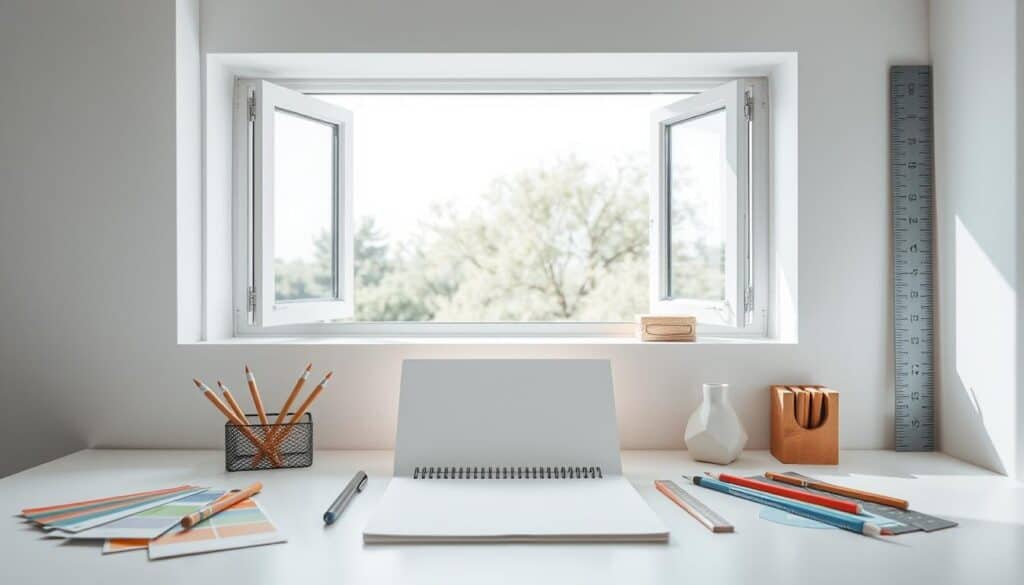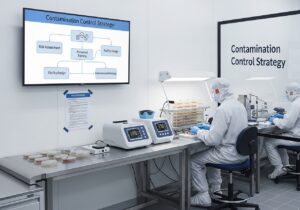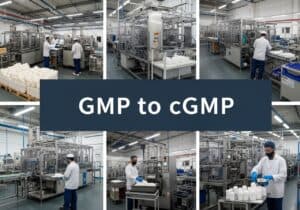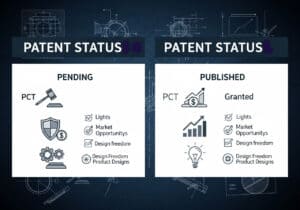Did you know less than 25% of companies feel they’re on track with integrating climate change policies? This highlights the need for innovative approaches like Clean Sheet Design in Product Design. By starting from zero, it offers new perspectives. It redefines functionality, sparks innovation, and cuts down new products’ carbon footprints. As corporate sustainability grows in importance, Clean Sheet Design emerges as a powerful method for modern product development.
Key Takeaways
- Clean Sheet Design enables a fresh start, fostering creative design solutions free from traditional constraints.
- It can lead to significant cost savings by optimizing material and manufacturing processes.
- Reduces the carbon footprint of products, aiding in meeting stringent environmental regulations.
- Offers a clear starting point, simplifying the design process and enhancing product performance.
- Enhances sustainability and aligns with modern, eco-friendly production methodologies.
Introduction to Clean Sheet Design
The clean sheet approach is a fresh way to design. Instead of updating old products, designers begin without any limits. This lets them be more creative and meet market needs better.
Understanding the Basics
Clean sheet design means thinking about a product in a new way from the start. Designers don’t let old ideas hold them back. This leads to innovations in how things look, work, and feel to the user.
Key steps include using 3D CAD for structure and FEA to make systems better. Designers combine mechanical and electrical work early on.

The Importance in Modern Product Development
Using the clean sheet approach is key for companies wanting to stand out. It helps create new products that cost less to develop and bring in more profit.
| Key Benefits | Statistics |
|---|---|
| Lower costs in new-product development | 20%+ |
| Clients served | 1000+ |
| Increase in profit margins | 20–30% on average |
By starting from scratch, companies can plan every detail well. They make high-quality products that are up to standards. Plus, they’re cheaper and faster to make. Clean sheet design is a powerful way to succeed in making new products.
Enhanced Innovation with Clean Sheet Design
Clean sheet design is changing how companies think about creative design solutions and product innovation. It lets them ignore old designs. This means they can explore new materials and technologies without limits. Industry leaders like Amazon have used clean sheet design. They made innovative products like AWS and Kindle because of it.

Fostering Creative Design Solutions
Amazon has shown how powerful this method can be. It uses design thinking concepts to meet changing customer needs. Many new products from Amazon show that taking risks can lead to success in the long run. Even if some ideas fail at first, focusing on long-term goals and customer happiness pays off.
Breaking Away from Traditional Constraints
Gulfstream Aerospace also sees clean sheet design as key for new products. Unlike the usual step-by-step updates, Gulfstream’s G500 and G600 jets started from nothing. They were built based on what customers wanted. These jets have new flight technology that makes flying safer. This fresh start needed big dreams, a focus on customers, and lots of investment. But, it gave them a strong advantage over others.
Both Amazon and Gulfstream show the benefits of leaving old ways for new, open design methods. By using design thinking concepts and putting customers first, businesses can thrive. They can stay ahead in a fast-changing market.
Cost Efficiency in Product Design
Today, being cost-efficient in product design is key to stay ahead. Early adoption of robust design methods can lower costs and boost profits. This approach helps manage expenses from the start.
Reducing Material and Manufacturing Costs
Optimizing the production process is crucial, from material selection to delivery. This method cuts waste and saves money on design.
Approximately 80% of a product’s cost is decided in the design phase.
Redesigning products can lead to big savings. By analyzing the manufacturing process and using resources wisely, inefficiencies are exposed.
Optimizing the Design Methodology
Improving design isn’t just about cutting material costs. It involves teaming up finance experts, engineers, and product specialists early on. This collaboration leads to quicker launches and bigger profits, making a company more competitive.
The clean-sheet process also includes detailed analysis like comparing expected and actual costs. This helps in planning purchases and negotiating. By adopting this forward-thinking approach, manufacturers have seen significant cost improvements. This shows efficient processes are vital for long-term success.
Sustainability Through Clean Sheet Design for Product Design
Working towards sustainability in product design is key for businesses today. Clean sheet design brings new ideas that lessen environmental harm. It highlights the importance of planning from the start to achieve sustainability.

Reducing Carbon Footprint
This approach helps lower the environmental impact. It influences choices about materials and how things are made. Using smarter materials and more efficient ways to manufacture reduces carbon emissions.
A factory in Shanghai improved its main heat-transfer system to save energy. They used wider, shorter, straight pipes which lowered energy use by at least 86%.
Meeting Environmental Regulations
Focusing on sustainability helps companies meet and exceed environmental rules. This proactive approach keeps companies ahead and avoids fines. The EU’s chemicals strategy is a good example of aiming for sustainability while caring for future generations.
The following points highlight key benefits:
| Factor | Details |
|---|---|
| Product Safety | Enhances safety by utilizing safer chemical alternatives. |
| Pollution Reduction | Minimizes pollution risks through improved design practices. |
| Circular Economy | Supports transitioning to a circular and low-carbon economy. |
| Regulatory Compliance | Assures alignment with stringent regulatory frameworks. |
Adopting unified methods and standards for sustainable design leads to better, safer products. The European Commission’s Joint Research Centre develops sustainable design methodologies. These ensure products meet strict environmental standards.
Advantages of a Clear Starting Point
Starting from scratch in product design brings many benefits. It uses the clean sheet design approach for a clear start. Teams approach projects more openly, free from old design limits.

One of the best things about clean sheet design is the chance to rethink everything. Without old ideas, designers explore all possibilities. This ensures the final product is top quality and efficient.
| Benefit | Explanation |
|---|---|
| Enhanced Innovation | Promotes creative solutions by breaking free from traditional design constraints. |
| Greater Alignment with Market Needs | Focuses on designing products that are immediately relevant to current consumer demands and technological capabilities. |
| Improved Product Performance | Allows for a comprehensive evaluation and optimization of functionalities and performance metrics. |
| Increased Design Flexibility | Enables the rethinking of design processes, allowing for the incorporation of advanced materials and methods. |
Furthermore, this fresh start allows for the use of new materials and technology. It makes the design process more adaptable to changing markets and consumer tastes.
So, the clean sheet design method leads to better products. It uses...
You have read 37% of the article. The rest is for our community. Already a member? Log in
(and also to protect our original content from scraping bots)
Innovation.world community
Login or Register (100% free)
View the rest of this article and all members-only content and tools.
Only real engineers, manufacturers, designers, marketers professionals.
No bot, no hater, no spammer.
Related Readings & Methods
- Value engineering: analyzing product functions to reduce cost while maintaining performance.
- Design thinking: empathizing with users to create innovative solutions through iterative prototyping.
- Concurrent engineering: collaborative approach where cross-functional teams work simultaneously on product development.
- Sustainability in design: incorporating environmental considerations and life cycle analysis in the design process.
- Design for Manufacturability (DFM): designing products to simplify manufacturing processes and reduce production costs.
- Human-centered design: focusing on user needs and experiences to create more intuitive and accessible products.
- Reverse engineering: analyzing competitors’ products to understand their design and improve upon them.
- Modular design: creating products with interchangeable components to enhance flexibility and customization.
FAQ
What is Clean Sheet Design for Product Design?
Clean Sheet Design starts from zero. It ignores old ways to boost innovation. This reshapes what products do and how they feel to users.
How does Clean Sheet Design promote innovation?
It dumps old rules for a new outlook. Clean Sheet Design leads to unique solutions and creativity. It opens fresh paths in product creation.
What is the significance of Clean Sheet Design in modern product development?
It lets companies hit environmental goals, cut carbon emissions, and use the latest tech and materials. This makes products more eco-friendly and ahead in the market.
How does Clean Sheet Design contribute to cost efficiency in product design?
Beginning anew optimizes how things are made. It slashes material expenses and waste. Thus, it boosts product profits while keeping quality high.
In what ways does Clean Sheet Design support sustainability?
The method prefers eco-friendly materials and efficient making methods. It reduces the harm to our planet. Also, it helps firms meet tough environmental rules.
What are the advantages of having a clear starting point in product design?
Starting fresh offers clear vision and adaptability. It frees teams to innovate with no old ideas in mind. They fully focus on using new tech and meeting market demands.
How does Clean Sheet Design improve product performance?
Rethinking every part from scratch boosts how things work, last, and remain reliable. It uses the latest science and research for better products.
How does Clean Sheet Design streamline production processes?
It makes design and making one smooth step. This lowers operation times and costs. It leads to efficient, sustainable making with less downtime.
How does Clean Sheet Design ensure flexibility and adaptability in product design?
It preps products for fast market changes and custom needs. So, they meet new demands well, staying competitive and technologically advanced.
What role do advanced materials and modern manufacturing techniques play in Clean Sheet Design?
New tech and materials make products stand out. They achieve better efficiency and quality with the newest making methods.
What are the practical steps to implement Clean Sheet Design?
It needs careful planning, thorough research, and teamwork across departments. This makes sure every improvement is considered from start to finish.
Glossary of Terms Used
American Welding Society (AWS): a nonprofit organization that develops standards, certifications, and educational resources for the welding industry, promoting safety, quality, and technical advancement in welding practices and technologies.
Computational Fluid Dynamics (CFD): a numerical method used to analyze fluid flow, heat transfer, and related phenomena by solving the governing equations of fluid motion and thermodynamics through discretization techniques, enabling simulation and visualization of complex fluid behavior in various engineering applications.
Computer Aided Design (CAD): a software application used for creating, modifying, analyzing, and optimizing designs in various fields such as engineering, architecture, and manufacturing, enabling precise drawings and models through digital tools and techniques.
Design for Manufacturing (DfM): a set of principles aimed at simplifying and optimizing product designs to enhance manufacturability, reduce production costs, and improve quality by considering manufacturing processes, materials, and assembly techniques during the design phase.
Finite Element Analysis (FEA): a numerical method for solving complex engineering problems by breaking down structures into smaller, simpler parts called elements, allowing for the analysis of stress, strain, and deformation under various conditions.
Value Engineering (VE): a systematic method to improve the value of a project by analyzing its functions, reducing costs, and enhancing performance without sacrificing quality or reliability. It involves interdisciplinary teamwork to identify and implement cost-effective alternatives.




















include examples from smaller businesses or startups, as they often lead the way in innovative sustainable practices with limited resources
initial costs or need for specialized training to implement ?
Related Posts
The Fulltext UNESCO Nomenclature
Contamination Control Strategy & Cleanroom 26 Best Practices
From GMP to cGMP: the Full Mastering Guide
IQ OQ PQ Process Validation: Full Theory & Praxis
The “Lone Nut”, the “First Follower”, and the “Fast Follower” Strategies
Best 20 Usages of Proxies For Engineering